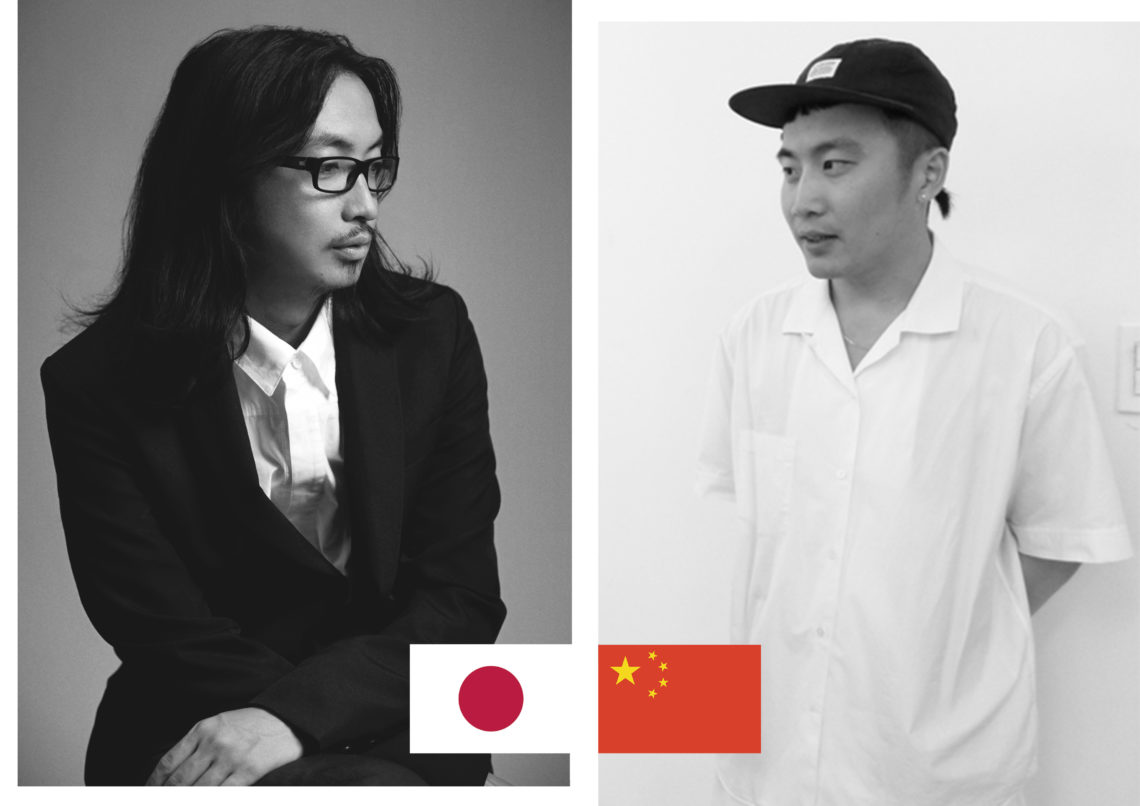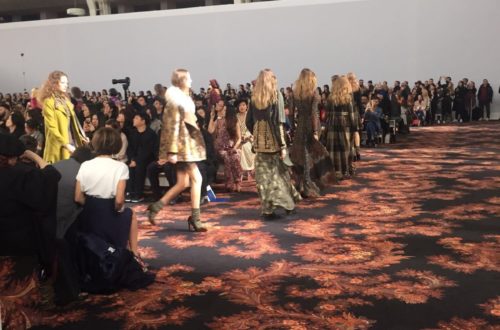Finally we are back at Bocconi, back at BS4F, and back at Milan Fashion Week. The new year calls for new experiences, so we decided to try something out: while the members usually attend events organized by Italian brands, this time there were also emerging asian designers added to the busy schedule. Today we will discuss the fashion show of Atsushi Nakashima, Japan, along with the presentation made by Samuel Yang from China, and see what they do to make the fashion-saturated Milan find place for newcomers from the east.

Atsushi Nakashima
The Japanese designer Atsushi Nakashima studied Fashion Design in Nagoya Fashion College, Japan, and claims to have been strongly influenced by Comme des Garcons at that time. However, the Japanese fashion influence on Nakashima got equilibrated by European fashion when he later worked for Jean Paul Gaultier in Paris (and further on for Jil Sander). The fascination of pure avant-garde changed under the appreciation of the classic foundation, and the style of the designer’s own brand was defined as Neoclassic.
The S/S 2017 collection, shown on September 23rd at the Museo del Novecento, featured the sharp lines and strict tailoring, which Atsushi Nakashima identifies as the main traits of his style. Another important thing is patterns: the Japanese education in design presumes studying pattern-making. Having developed the interest to this craft while studying, the designer holds on to his roots in this sense and keeps paying attention to ornamentation. This time he zoomed up the block check and polka dots, and created a 3D effect on the distorted camouflage fabric.
The concept of the collection is the Two: as the press release says, “Two objects turn into one, mutually complementing one another”. The models walked the runway in couples, the coupling motif showed through the designs: pants on top of pants, one shirt above the other, two bombers simultaneously. The climax of this was the final look: the two models wearing white classic suits, the prints on which formed the Japanese flag on the front and the Italian at the back. This clearly was the message of the designer taking inspiration from both his homeland and Europe, Italy in particular, these two worlds turning into one in his designs.

Photo source: nowfashion.com
Samuel Guì Yang
For the young Chinese designer Samuel Guì Yang this presentation, held on September the 24th at a studio curated by the interior designer Thibaut Van Hoorebeke and featuring some pieces by the artist Jiang Sheng, was a debut at the MFW. Unlike Atsushi Nakashima, Samuel Yang did not study in his home country; instead, he graduated from Central Saint Martins in London, and now lives and works there. In terms of working with more experienced designers, he had a placement at Alexander Wang. The young designer is interested in exploring the new physical and visual languages to interpret the fashion universe and its processes.
The theme for this presentation – modernizing the old, aging the new – led to the reinterpretation of lengths, shapes prints and lines. The setting of the studio, the details of the interior and the collection itself spoke about combining the opposites: the future and the past, the traditional and the modern, the natural and the technological, the east and the west. The apparel looks contemporary, yet the classical orientalism is felt.
Coming back to where I started, getting acquainted with these designers was a new thing for us at the BS4F. The scene of the Milan Fashion Week is replete with outstanding designers mostly of Italian origin, many of them worshipped, respected and desired for decades. Even for the upcoming brands the reputation is instantly high due to the worldwide fame of the Italian fashion and craftsmanship. Coming from far and attempting to find a niche is a risky business taking into consideration the competition and the importance of brand image and heritage in the sphere of fashion. Still, the two designers I just introduced did it. And apparently they will be followed. What do they have to offer to the satiated customer to get into the span of his attention?
Firstly, what makes it hard to enter is also a “trump card”. The oriental origin and everything that follows: traditions, experiences, a different vision – it is exactly what the client cannot get from the Italian market, however specialized and saturated it is. While Nakashima was greatly influenced by the Parisian Gaultier and Yang took in all the experience of the British design education, the approach of both has as one of the pillars the cultural traits of the native country.
Design and appeal, still, are not everything. One of the main reasons for Italian fashion businesses’ success is the reputation of the artisans. And this reputation is not something one can easily compete with. But the Asian designers take a different approach: while the traditional high-quality tailoring requires ages of experience and know-how, they try reaching the client with the innovative methods. Atsushi Nakashima uses 3D printing; Samuel Yang creates rubber yarn for his tops and dresses and adds technical materials.
For sure the positioning of the Italian brands is strong and pretty stable. However, for the clients who crave for something fresh and less-known, with an oriental and at the same time innovative touch, the designers combining Eastern background and European experience are creating a new market. There is no doubt that more Asian designers will emerge on the European fashion scene; we are looking forward to see the new faces and discover how it all evolves.
by Ksyusha Task






